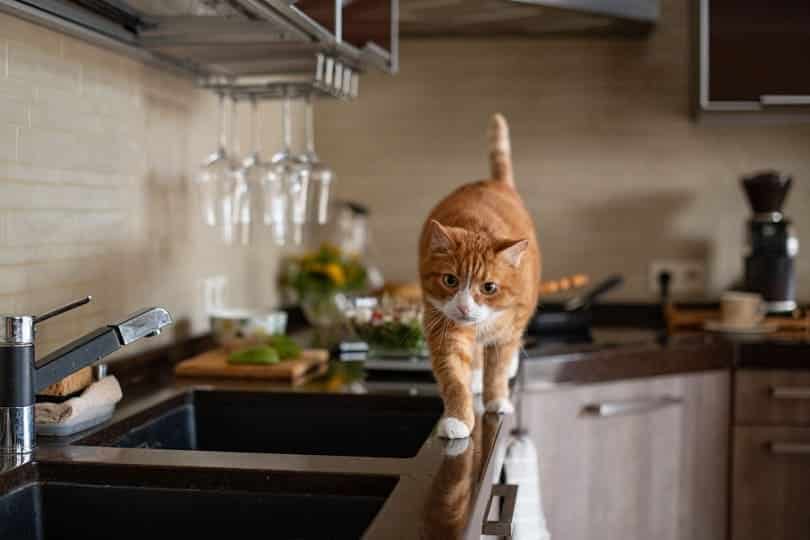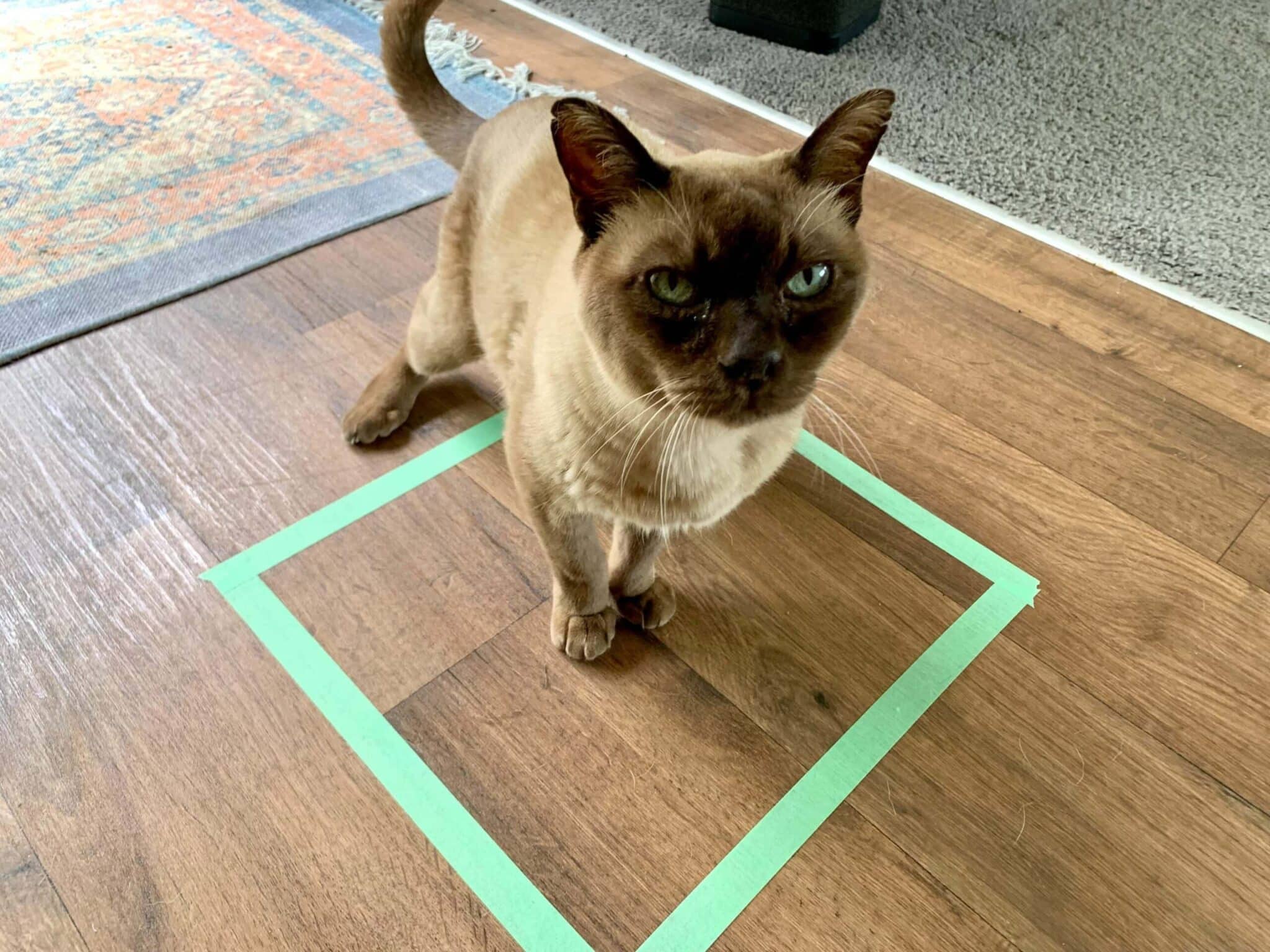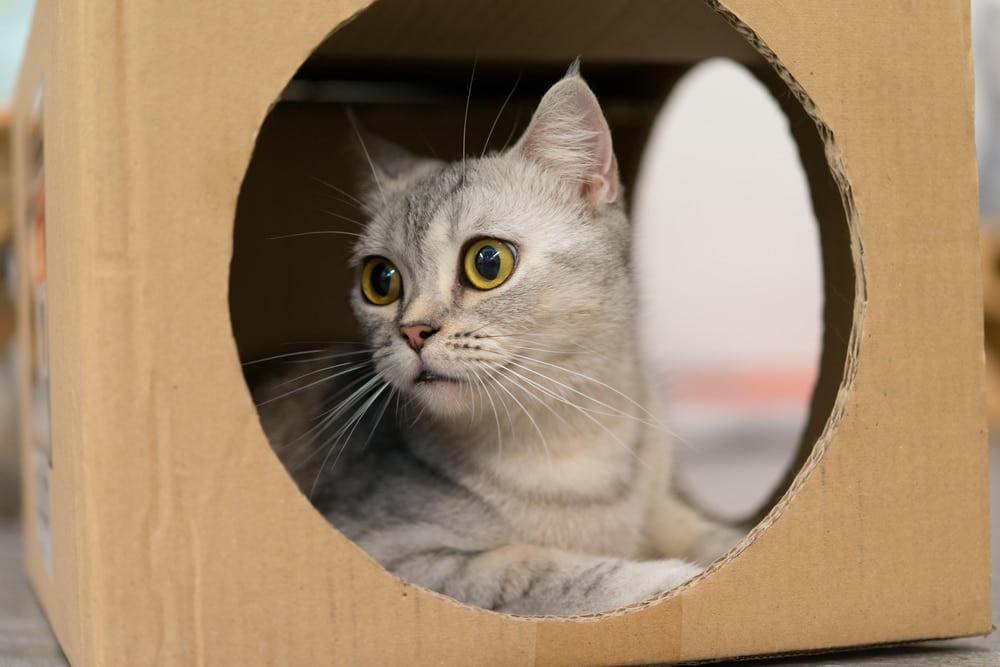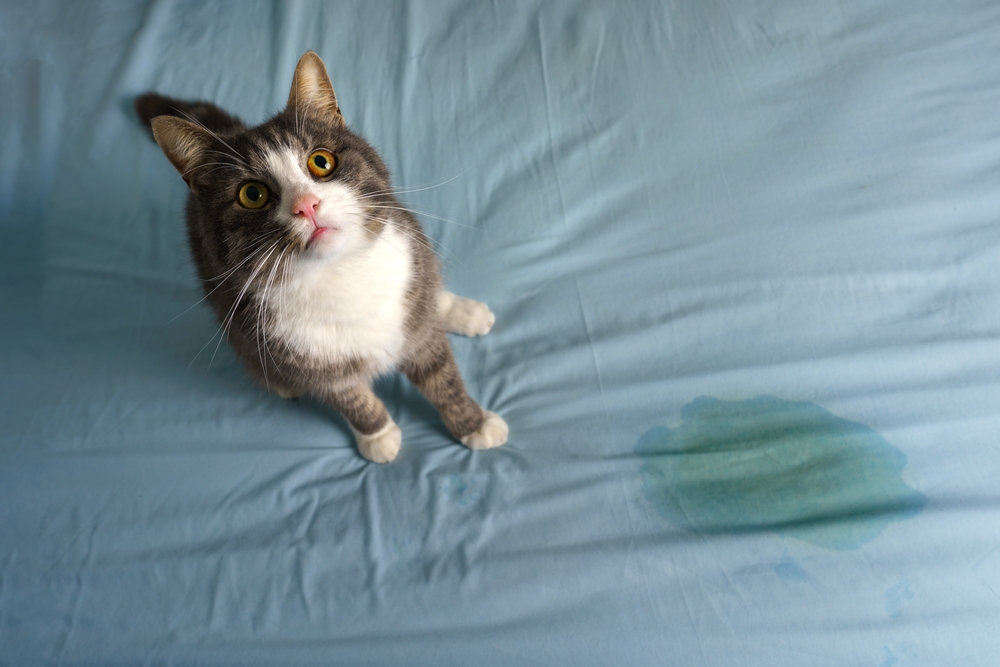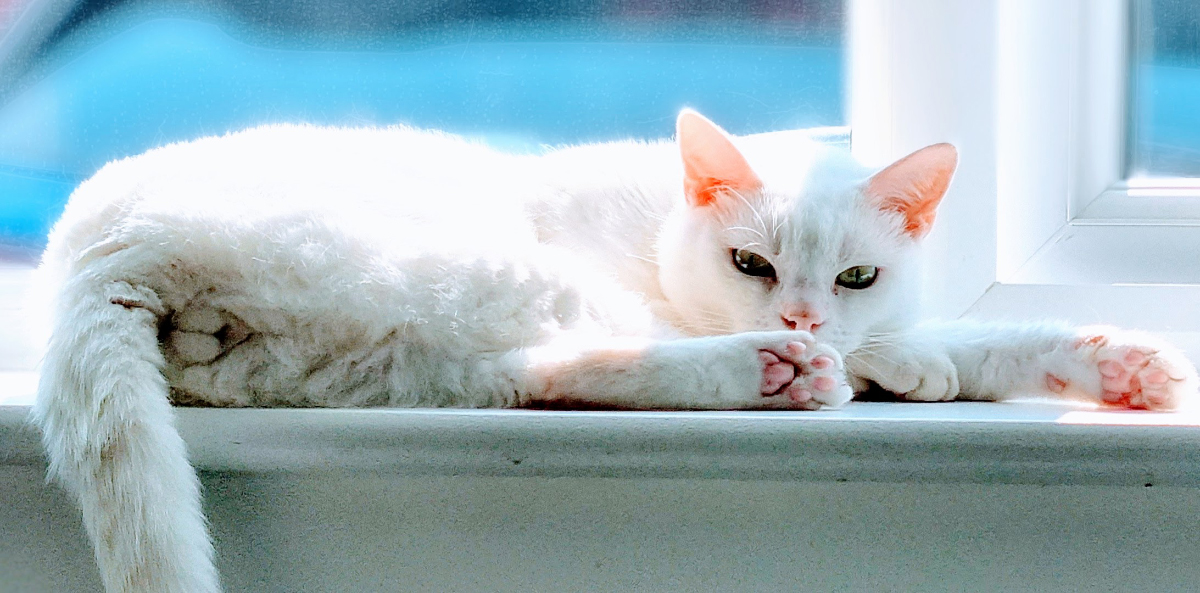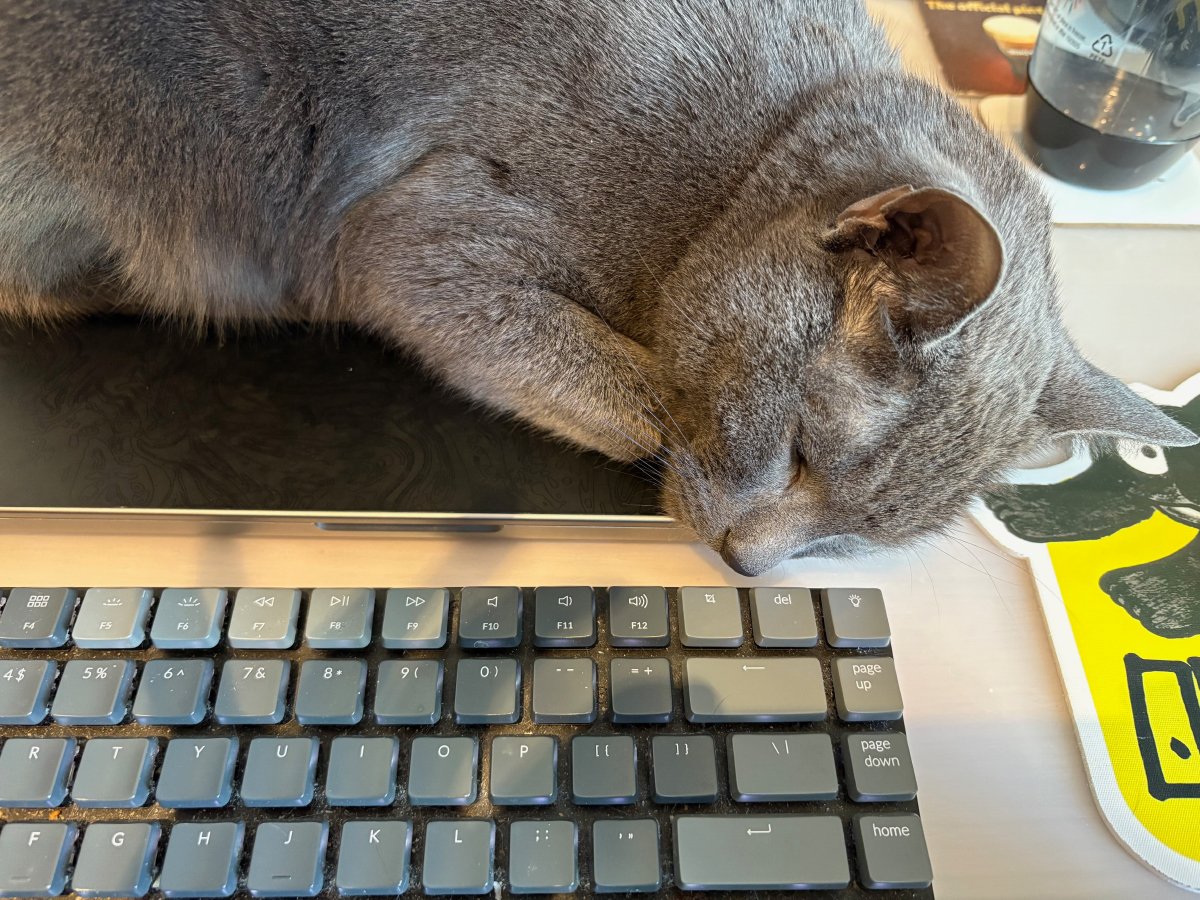Cats are naturally attracted to high places, but that’s not a good thing when it’s your kitchen counter. Aside from being a nuisance, cats on countertops can be dangerous for them and not hygienic for you. They can walk on the hot stove, eat leftovers that are toxic to them, ingest cleaning products, or track bacteria from the litter box onto your food surfaces.
Fortunately, training your cat to stay off the counters is a simple task with a little patience and consistency.

Before You Start: Here Are the Supplies You’ll Need
- Double-sided tape or aluminum foil
- A clicker tool
- A cat climbing tree or tower
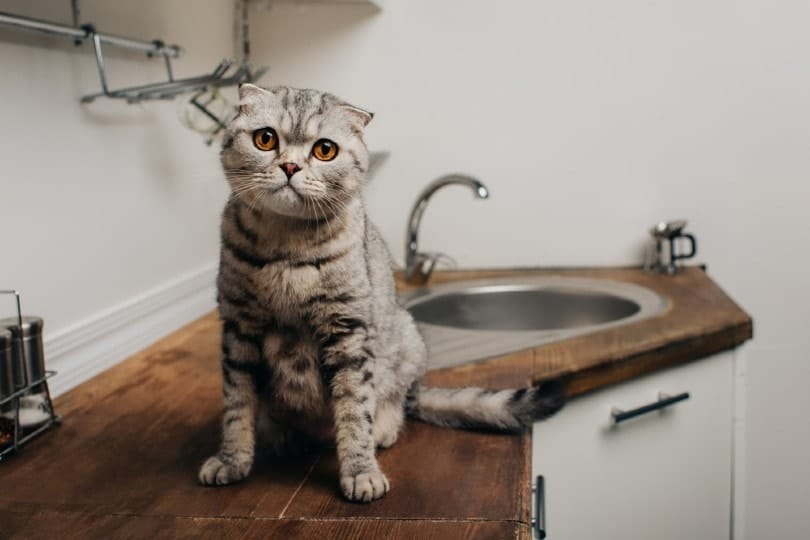

Step-by-Step Guide to Train Your Cat to Stay Off the Counters
1. Add a Deterrent
You shouldn’t punish your cat for jumping onto the counters, but you can help to deter the behavior to support your training. Putting sticky double-sided tape on the edge of the counter is often enough to keep cats from jumping up. Cats don’t like the feeling of sticky tape on their paws, so hitting that tape is a strong deterrent.
Another option is crinkled aluminum foil. Similarly, cats don’t like the feeling on their feet or the noise that aluminum foil makes, but this may not be practical for every home.
2. Make the Counter Less Appealing
Bad habits are hard to break, especially if you’ve been accidentally encouraging your cat to get on the counter. Things like leaving their food bowl on the counter, allowing them to drink from the faucet, or leaving food around have led your cat to believe the countertop is an appropriate place for them.
Make sure your counter is clean and free of treats, crumbs, or cat food. If your cat keeps finding food on the counter, it is likely that they will keep looking for it. If the faucet is an issue, consider getting a water fountain that gives your cat moving water for drinking.
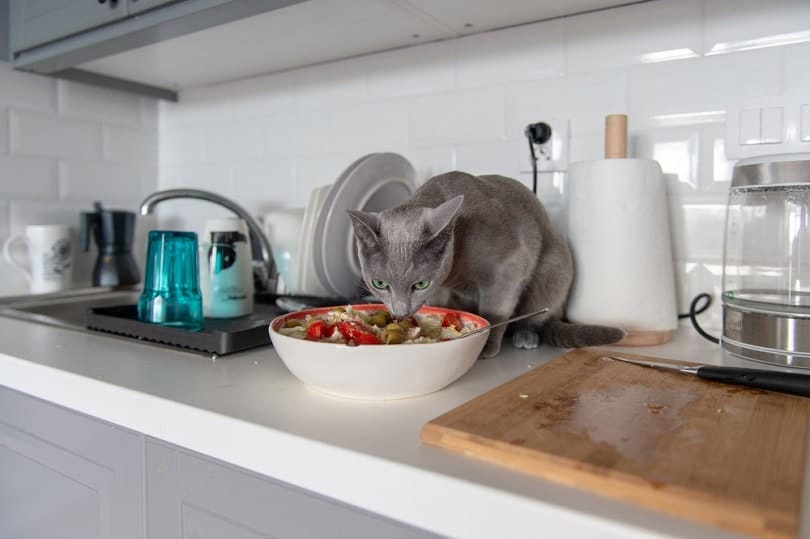
3. Start Clicker Training
Cats respond best to positive reinforcement instead of punishment. Clicker training can be effective for redirecting bad behaviors to good ones.
Before you can use clicker training, you have to introduce your cat to the clicker. These are widely available at pet stores and have a simple concept: Your cat gets a treat after the sound of the clicker, building a positive association with the sound and a reward.
Once your cat has this connection, they will begin to associate the sound of the clicker with good behavior and a reward.
4. Use the Clicker to Reinforce Your Cat’s Good Behavior
If your cat has a strong connection with the clicker elsewhere, you can open new ways of communicating with them and letting them know what you consider to be good and desired behavior. If your cat remains on the floor or is on top of a shelf but not over the kitchen counter, click and reinforce them. Your cat is more likely to choose those places that offer a positive outcome in the future.

5. Train Your Cat to Use Alternatives
To keep your cat off your kitchen counter, you should offer alternatives. You should have a climbing tree or cat tower to give your cat an opportunity to climb and jump. Use this furniture to train your cat to jump up on their own. Be sure to reward the behavior too, whether you encourage them or happen to see your cat using their tree on their own.
Together, these training experiences teach your cat that the counter is not a good climbing area and that the cat tree is.
If you need an experts advice, you can consult a vet online.
If you need to speak with a vet but can't get to one, head over to PangoVet. It's an online service where you can talk to a vet online and get the advice you need for your pet — all at an affordable price!

Conclusion
Cats will generally hang out anywhere they can reach, including your kitchen counters. Whether you’ve encouraged this behavior by accident or simply can’t get your cat to stop, using clicker training and consistent redirection and rewards can teach your cat to stay off the counters and use more appropriate climbing areas.
Featured Image Credit: EkaterinaSid, Shutterstock

